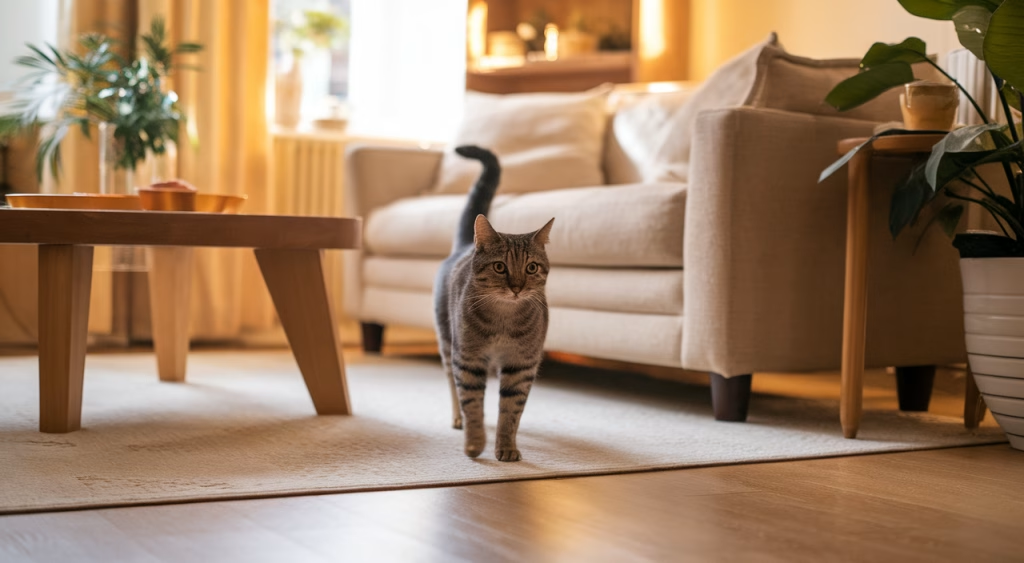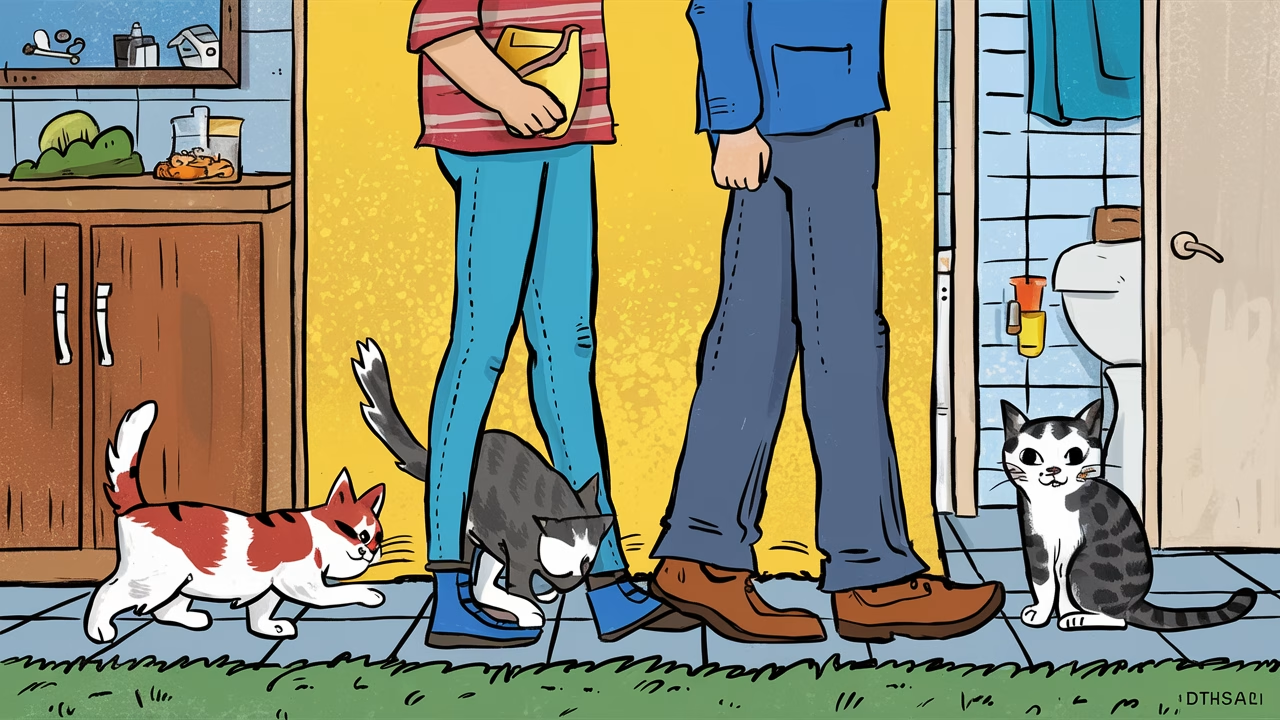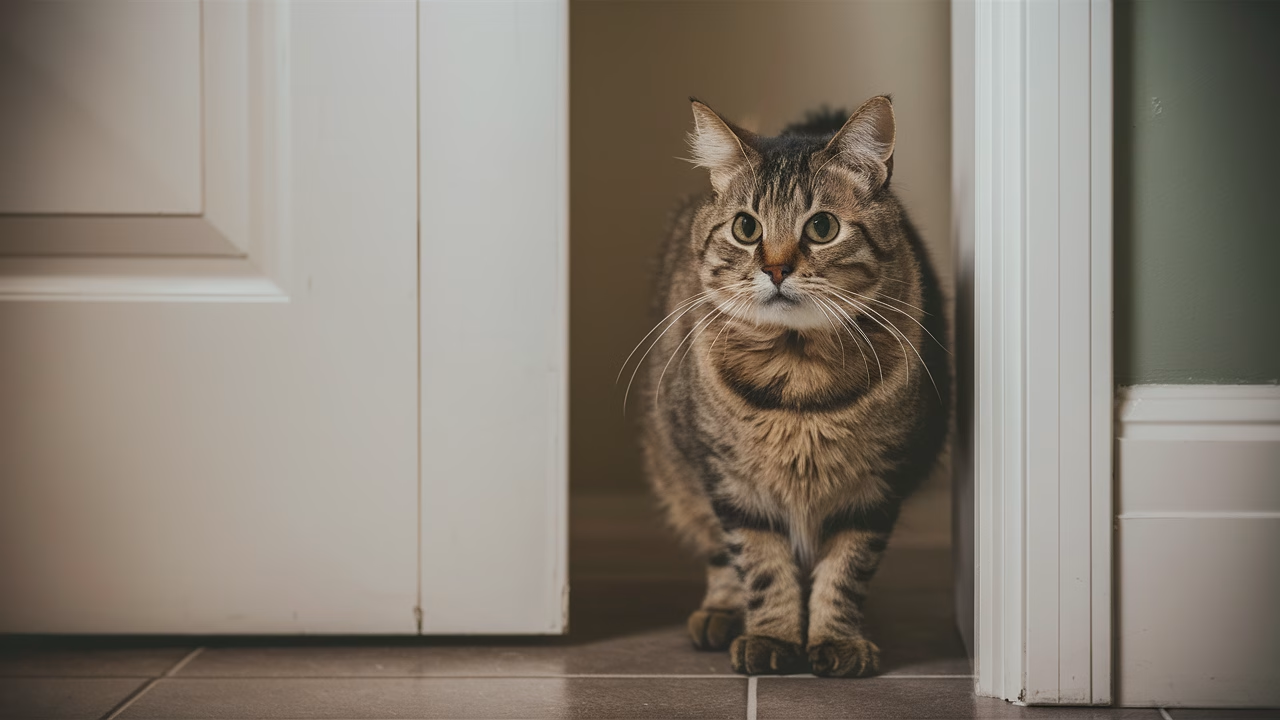Why Does My Cat Follow Me Everywhere?
Because in your cat’s eyes, you’re their clumsy, hairless kitten who needs round-the-clock supervision—and it’s equal parts hilarious and heartwarming. Cat following behavior reflects everything from social bonding, food motivation, and even territory surveillance. Your feline isn’t just being cute. They’re fulfilling ancient instincts on your behalf. Yes, they’re your security guard, your food critic, and occasionally, your fluffy overlord.
TL;DR:
- Cats follow for emotional attachment: They form strong social bonds, often seeing us as part of their family group.
- Instincts at play: Your cat’s following behavior is driven by inherited maternal instincts and social awareness.
- Variety of follower types: Shadow cats, ankle cats, and supervisory cats each show different patterns.
- It’s about trust: Following you—even to the bathroom—signals a deep trust and preference for your company.
- Territorial behavior isn’t just outdoors: Even indoor cats follow to patrol their “home territory.”
Types of Cat Followers
Shadow Cats
Shadow cats are the silent ninjas of the feline world. They’re always three steps behind, observing everything in a quiet yet watchful manner. You might not hear them, but turn around and—boom—eye contact at ankle-level.
These cats demonstrate strong but subtle social attachment. They don’t seek constant interaction but want to be where you are. It’s their way of staying connected without being intrusive—especially if your cat is the introvert of the fur-mily. This cat following behavior pattern shows they’ve bonded with you while maintaining their independence.
Ankle Cats
Ever tripped over your cat while walking to the kitchen at 7 a.m.? Congrats, you’ve got yourself an ankle cat. These feline companions practically crawl under your feet—rubbing, weaving, and meowing your ear off. Their behavior screams affection mixed with a healthy dose of “I’m starving… feed me now.”
Ankle cats often combine food motivation with bonding hormones, creating a high-contact follower that’s both adorable and slightly dangerous to your balance. This cat following behavior shows they’ve learned that staying close to you equals results.
Supervisory Cats
This type follows like a feline manager—checking rooms before you enter, perching on top places with a good view, and occasionally offering approving headbutts. Supervisory cats blend maternal instincts with territorial behavior. They want to ensure everything is safe and running to their liking.
The Psychology Behind Cat Following Behavior
Let’s unpack the psychology behind cat following behavior. Many cat owners think their pets are aloof, but cats are much more complex. Felines form deep social attachments with their humans that go beyond food dependency, tapping into evolutionary behaviors and learned interactions.
Maternal Instincts and Role Reversal
In feline society, mother cats teach their kittens how to hunt, groom, and stay safe. Indoor cats often project this role onto humans—but with one hilarious twist: they see you as the kitten. From your cat’s perspective, you clearly need help. You’re lazy, unaware of predators (you sleep with your eyes closed!), and bafflingly bad at catching dinner—or even opening a tuna can efficiently.
That’s why your cat follows you: to keep you out of danger or at least to supervise your incompetent efforts. This cat bonding through following demonstrates their protective instincts toward you.
Survival Mode and Food Patterns
Even though your fridge magically dispenses food (to your cat’s eternal confusion), many cats still operate in survival mode. They’ll trail your footsteps in the hopes of a meal, a treat, or clues about your next kitchen move. They’ve learned that following you equals results.
Cat Bonding Through Following
Each time your cat chooses to spend time with you—whether you’re brushing your teeth or binge-watching a nature documentary—they’re reinforcing social bonds. In fact, studies suggest both cats and humans experience a release of bonding hormones (the bonding hormone) during cuddles, purring sessions, or mutual eye contact. Following you is their version of quality time. Admittedly, clingy quality time.
Human Behavior Reinforcement
You may not realize it, but you’ve been subtly trained by your kitten-turned-Dr. Claw. When your cat gives that “feed me” stare near the treat drawer and you oblige, it’s positive reinforcement—in reverse. Now they know that following you works, so they keep doing it. Psychologically, it becomes a game of cause and effect where you’re the trained participant.
Impact of Following Behaviors on Bonding
Cat following behavior isn’t just instinct—it’s relationship building.
When your cat chooses to use their energy to be with you instead of sleeping in a sunny window spot, it’s evidence of a social bond. These shared routines—whether morning bathroom consults or evening TV sessions—create behavioral patterns unique to your bond.
Territorial Trust
When your cat walks into a room before you, tail up, ears attentive, and body language relaxed, they’re sending reassurance: this space is safe—and I made it that way. Following becomes a subtle way of saying, “I’ve got your back… or at least your ankles.”
Follower-Type and Bond Strength
| Follower Type | Personality Traits | Bond Indicators |
|---|---|---|
| Shadow Cat | Quiet, observant, calm | High trust, low demand |
| Ankle Cat | Outgoing, demanding, vocal | Strong need-based bond |
| Supervisor Cat | Confident, curious, smart | Mutual respect and protection |
Understanding Cat Territorial Behavior Through Following
Not All Cats Roam—Some Patrol
Think your indoor cat has no sense of territory? Think again. Your home is a jungle, and every room holds significance—from the hunting grounds (kitchen) to the vulnerable watering hole (bathroom). By following you, your cat is engaging in territorial behavior: securing their domain and monitoring activity.
Phantom Threats & Domestic Defenses
Your bathroom trips are their high-alert missions—closed doors = danger potential. They won’t rest until they’ve checked the perimeter (read: watched you awkwardly use the toilet from two feet away). This territorial behavior shows how seriously cats take their role as your protector.
Family Member Tracking
And yes, cats do follow different people for different reasons. They’ll follow the feeder out of food-based loyalty, the warmest lap for comfort, and the most energetic person for play. Cat following behavior patterns customize depending on what your cat wants—and who delivers best.
Tips for Managing and Appreciating Cat Following Behaviors
If you’re feeling overwhelmed—or just creeped out—by your little stalker, it helps to strike a balance between space and bonding.
- Respect routines: Cats love consistency. Try following meal and play timing.
- Dedicate attention: Spend intentional time bonding—then take guilt-free space when needed.
- Reward independence: Use environmental enrichment (cat trees, windows, puzzle toys) to encourage solo time.
- Confirm safety: Excessive following can sometimes signal stress or health concerns. Look for behavior changes and consult a vet when in doubt.
Frequently Asked Questions
Why does my cat follow me to the bathroom?
Bathrooms are high-alert zones for cats. Your feline sees you as vulnerable and wants to guard you. Also, if they’ve learned you give them attention here, it becomes part of your shared ritual.
Is it normal for my cat to follow me everywhere?
Yes! It’s a sign of bonding, attachment, and positive association. If the behavior is sudden or obsessive, rule out stress or medical issues.
How is following behavior different in kittens vs adult cats?
Kittens may follow for safety and learning, mimicking your actions. Adults often follow to show social connection, entitlement, or routine expectation (especially when food is involved).
Does my cat love me if it follows me?
Following behavior is one of many ways cats show affection. If your cat chooses to be near you when they could be napping elsewhere, that’s love—in cat terms.
What if my cat’s following becomes annoying?
Set boundaries kindly. Distract them with interactive toys, establish consistent routines, and ensure they have other enriching activities when you need space.
Why does my cat follow only one person in the house?
Cats assign roles. The person who feeds, entertains, or shares quiet time may become their ‘chosen human.’ Most cats follow out of purpose—not favoritism.
Should I encourage or discourage my cat’s following behavior?
Encouraging the behavior can strengthen your bond, but if it disrupts your day or your cat shows separation anxiety, balance it with training or reinforced independence.





